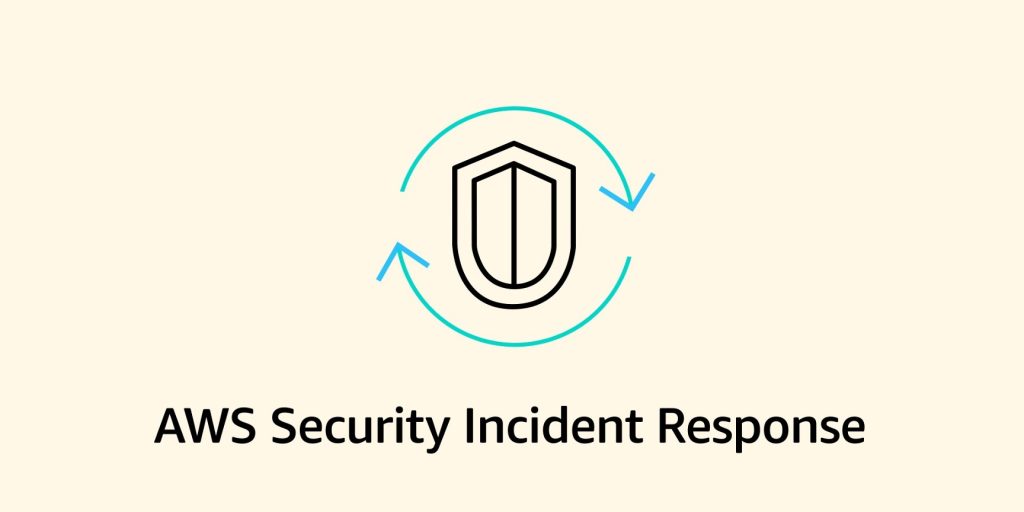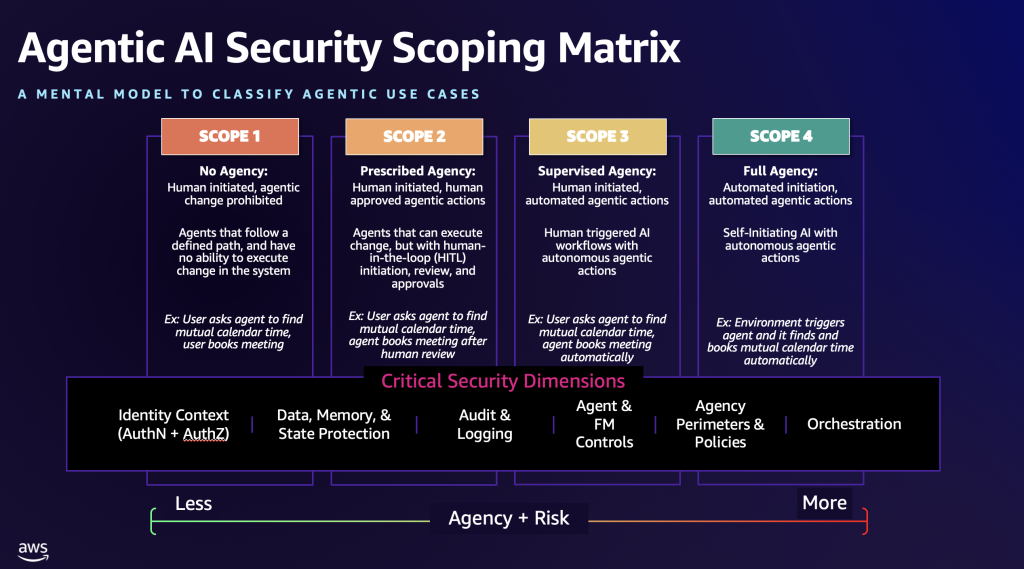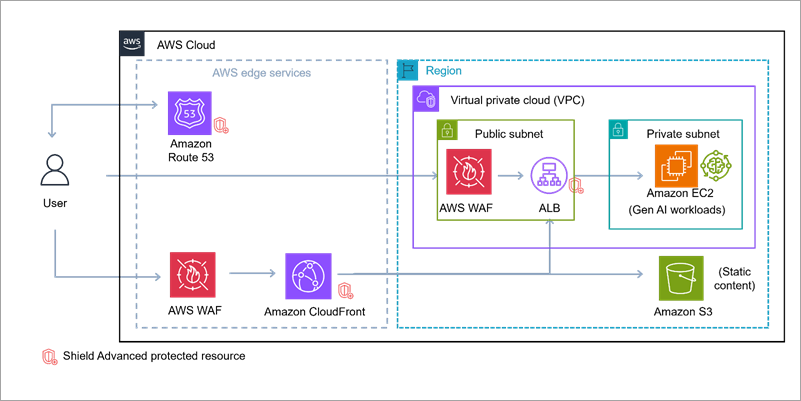AWS Security Blog
Category: Artificial Intelligence
Accelerate investigations with AWS Security Incident Response AI-powered capabilities
If you’ve ever spent hours manually digging through AWS CloudTrail logs, checking AWS Identity and Access Management (IAM) permissions, and piecing together the timeline of a security event, you understand the time investment required for incident investigation. Today, we’re excited to announce the addition of AI-powered investigation capabilities to AWS Security Incident Response that automate […]
The Agentic AI Security Scoping Matrix: A framework for securing autonomous AI systems
As generative AI became mainstream, Amazon Web Services (AWS) launched the Generative AI Security Scoping Matrix to help organizations understand and address the unique security challenges of foundation model (FM)-based applications. This framework has been adopted not only by AWS customers across the globe, but also widely referenced by organizations such as OWASP, CoSAI, and […]
Securing Amazon Bedrock API keys: Best practices for implementation and management
Recently, AWS released Amazon Bedrock API keys to make calls to the Amazon Bedrock API. In this post, we provide practical security guidance on effectively implementing, monitoring, and managing this new option for accessing Amazon Bedrock to help you build a comprehensive strategy for securing these keys. We also provide guidance on the larger family […]
Protect your generative AI applications against encoding-based attacks with Amazon Bedrock Guardrails
Amazon Bedrock Guardrails provides configurable safeguards to help you safely build generative AI applications at scale. It offers integrated safety and privacy protections that work across multiple foundation models (FMs), including models available in Amazon Bedrock and models hosted outside Amazon Bedrock from other providers. Bedrock Guardrails currently offers six key safeguards to help prevent […]
Simplified model access in Amazon Bedrock
October 22, 2025: This post was updated to reflect additional IAM permissions necessary for Amazon Bedrock serverless models offered through AWS Marketplace. Amazon Bedrock has simplified how you access foundation models, streamlining the integration of AI capabilities into your applications. Here’s what’s changed and how to maintain control over model access in your organization. What’s […]
Defending LLM applications against Unicode character smuggling
When interacting with AI applications, even seemingly innocent elements—such as Unicode characters—can have significant implications for security and data integrity. At Amazon Web Services (AWS), we continuously evaluate and address emerging threats across aspects of AI systems. In this blog post, we explore Unicode tag blocks, a specific range of characters spanning from U+E0000 to […]
Build secure network architectures for generative AI applications using AWS services
As generative AI becomes foundational across industries—powering everything from conversational agents to real-time media synthesis—it simultaneously creates new opportunities for bad actors to exploit. The complex architectures behind generative AI applications expose a large surface area including public-facing APIs, inference services, custom web applications, and integrations with cloud infrastructure. These systems are not immune to […]
Enabling AI adoption at scale through enterprise risk management framework – Part 2
In Part 1 of this series, we explored the fundamental risks and governance considerations. In this part, we examine practical strategies for adapting your enterprise risk management framework (ERMF) to harness generative AI’s power while maintaining robust controls. This part covers: Adapting your ERMF for the cloud Adapting your ERMF for generative AI Sustainable Risk […]
Enabling AI adoption at scale through enterprise risk management framework – Part 1
According to BCG research, 84% of executives view responsible AI as a top management responsibility, yet only 25% of them have programs that fully address it. Responsible AI can be achieved through effective governance, and with the rapid adoption of generative AI, this governance has become a business imperative, not just an IT concern. By […]
Authorizing access to data with RAG implementations
Organizations are increasingly using large language models (LLMs) to provide new types of customer interactions through generative AI-powered chatbots, virtual assistants, and intelligent search capabilities. To enhance these interactions, organizations are using Retrieval-Augmented Generation (RAG) to incorporate proprietary data, industry-specific knowledge, and internal documentation to provide more accurate, contextual responses. With RAG, LLMs use an […]








